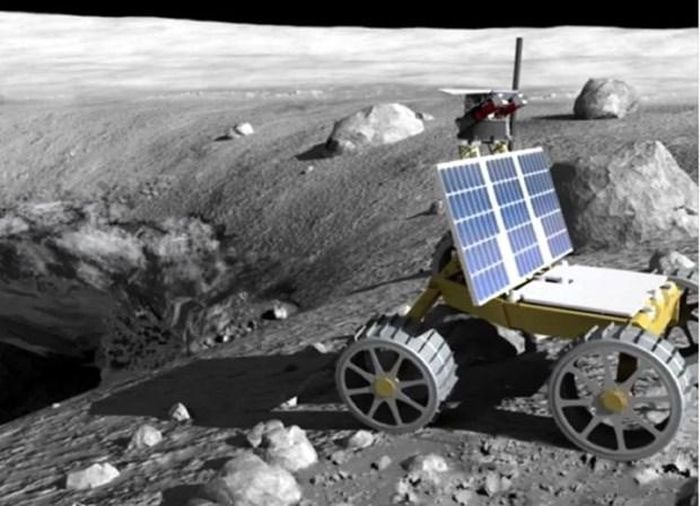Oxygen and water will be the initial and primary targets of the lunar resource extraction initiative. Subsequently, iron and other rare earth elements might be considered as mining operations expand.
The National Aeronautics and Space Administration (NASA) plans to begin extracting resources and minerals from the Moon within the next decade, according to information provided by a NASA rocket scientist.

NASA has started implementing its lunar resource extraction plans. (Source: Yahoo News).
Speaking at a mining conference in Brisbane, Australia, on June 28, Gerald Sanders, who works at NASA’s Johnson Space Center, stated that the resource extraction mission will soon be launched as soon as the American space agency sends a test drilling system to the Moon.
“We are trying to invest in the exploration phase and understand the resources (on the Moon) to minimize risks and demonstrate that investment in the extraterrestrial environment is feasible, leading to development and extraction activities,” he said, adding that NASA is still in the very early stages.
It is hoped that any advancements in lunar resource extraction will attract commercial investment, which in turn will help further reduce costs.
NASA estimates that the Moon holds resources “worth hundreds of billions of dollars that remain untapped.” Not only the U.S., but several other countries are also seeking to exploit lunar resources.
The Australian Space Agency plans to participate in NASA’s extraction efforts, with a semi-autonomous rover being used to collect lunar soil samples containing oxides by 2026. These oxides could be crucial in extracting oxygen from the Moon.
Samuel Webster, assistant director of the Australian Space Agency, stated: “This is an important step toward establishing a sustainable human presence on the Moon, as well as supporting future missions to Mars.”
Earlier this year, NASA scientists successfully extracted oxygen from lunar soil simulants containing oxides in a vacuum environment for the first time. A research team at the Johnson Space Center employed high-powered lasers to create combustion reactions, yielding significant amounts of oxygen from the oxide-rich soil.
This technology is described by the research team as a “major advancement in helping build a sustainable human presence on other planets.” NASA plans to return humans to the Moon for the first time in over 50 years through the Artemis program, with the first crewed missions expected to take place after 2024.




















































